Have Your Say: Next Generation, What Does the Future Hold?
At Design Insider we recognise the expertise within commercial interiors and we are proud to instigate conversations which inform, challenge & inspire the people who make our sector thrive.
We’ve brought together the next generation of commercial designers to share their expectations for the future?
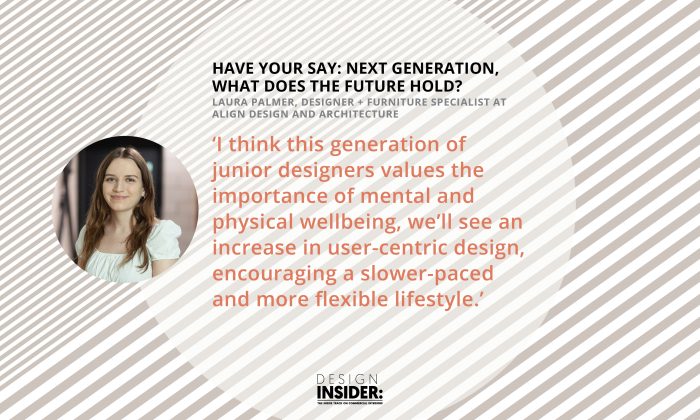
Having studied during a global pandemic, I think this generation of junior designers values the importance of mental and physical wellbeing more, meaning we’ll see an increase in user-centric design, encouraging a slower-paced and more flexible lifestyle. During that period, we were able to make things and try new creative hobbies too, which I think has increased our appreciation for and interest in handmade items. These will undoubtedly find more of a place in the interior schemes we work on. Also, as conversation around topics such as neurodivergence and accessibility has increased in recent years, Junior Designers will ensure a fully inclusive future for design, designing environments that can be used by everyone.
Laura Palmer, Designer + Furniture Specialist at Align Design and Architecture
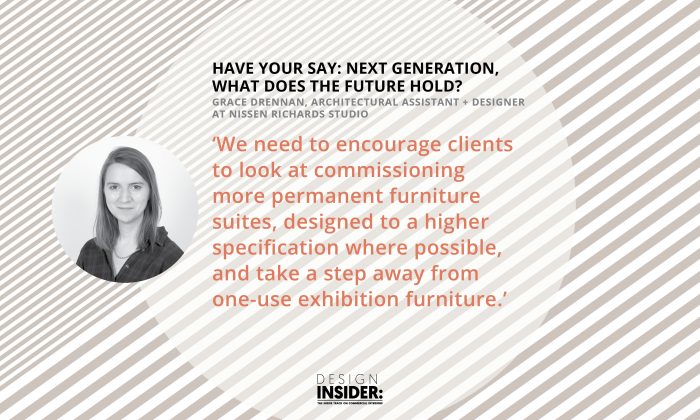
As designers in the cultural sector, we should look to re-evaluate single-use design within temporary exhibitions to ensure more sustainable outcomes. We need to encourage clients to look at commissioning more permanent furniture suites, designed to a higher specification where possible, and take a step away from one-use exhibition furniture.
On a larger scale, we can look to design wider furniture families with adaptable kits of parts and elements that can be used flexibly and updated from exhibit to exhibit, through either colour or graphics or combining them to form larger furniture elements. We should also be creatively finding ways to minimise waste where permanent design isn’t achievable. Instead of proposing solid wall constructions, for example, we could use lightweight materials for scene setting and backdrops. We should also continue to find solutions using the existing infrastructure galleries already possess.
Grace Drennan, Architectural Assistant + Designer at Nissen Richards Studio
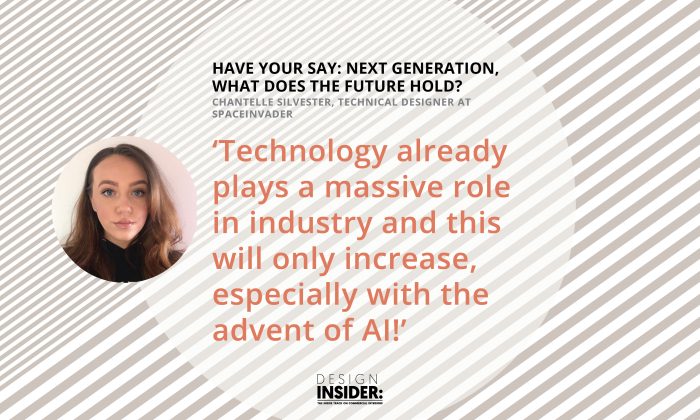
Technology already plays a massive role in industry and this will only increase, especially with the advent of AI (artificial intelligence). I know this can be a touchy subject, and that AI is already at work in many studios and practices, but we’re at a very early stage still and will be able to take fuller advantage of more aspects of AI in the future. Having the skillsets that everyone learns through education and work experience is always something a design company will need, but, if AI can add that extra bit of intrigue and elevate projects, then why not? It can only have a negative impact if we allow it to.
Chantelle Silvester, Technical Designer at SpaceInvader
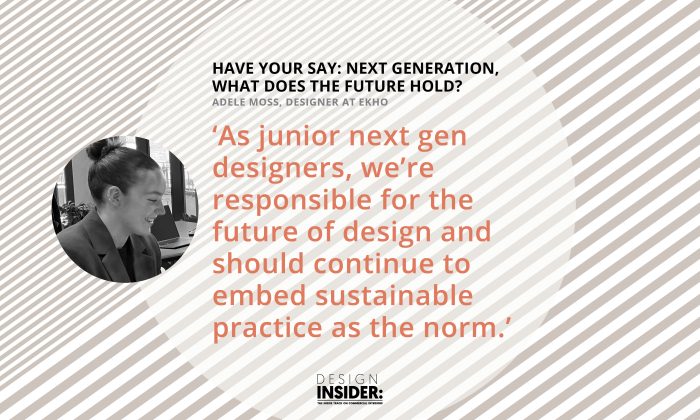
With social media’s reach and growth, interior design is a popular ‘follow’. In fact, we’re saturated with interior trends and products; a constant scrolling cycle of change. The knock-on effect can also mean a heavy impact on sustainability, however. As junior next gen designers, we’re responsible for the future of design and should continue to embed sustainable practice as the norm, but also design schemes with lasting legacy. We have and should take the opportunity to encourage people and our clients in particular away from Insta ‘fast design’ and re-focus on the benefits of resilient, sustainable and creative design solutions which will outlive the latest social media trend.
Adele Moss, Designer at Ekho
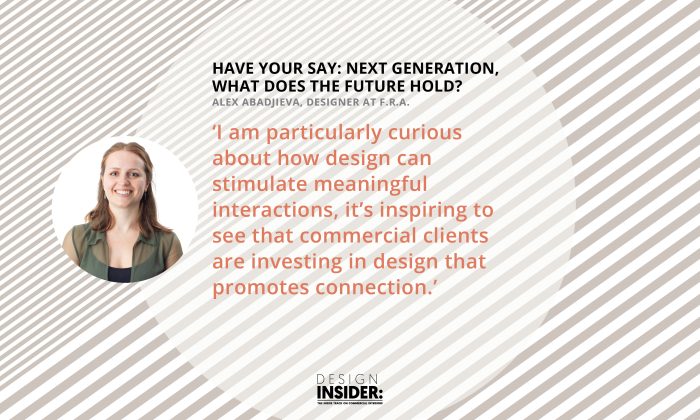
My first ten months at the wayfinding, placemaking and brand studio, f.r.a., have been a continual learning experience, shaped by a collaborative and supportive culture. After completing an undergraduate degree in Architecture followed by an MA in Graphic Communication Design at Central Saint Martins, my transition from primarily solitary projects to team-based studio work has been insightful. I’ve been involved in the entire design process, from strategy to technical development, whilst being exposed to client communication and how the studio operates as a business. I have also seen my confidence grow as I’ve been encouraged to push creative ideas and actively engage in different areas of the studio.
As for the future, I am particularly curious about how design can stimulate meaningful interactions. It’s inspiring to see that commercial clients are investing in design that promotes connection. Whether it’s by encouraging spontaneous interactions through placemaking or helping people navigate and pay attention to their physical environment through wayfinding. I will continue to seek connection throughout the design process by embracing collaboration, tool experimentation, and open-minded research, whilst also weaving connection into the final design outcome.
Alex Abadjieva, Designer at f.r.a.
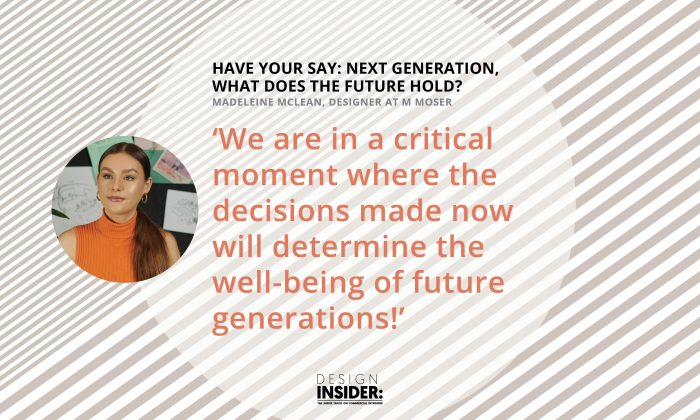
Most young people today grapple with uncertainty about the future, given the complex challenges we face environmentally, politically, and economically. Environmental concerns like climate change loom large. We are in a critical moment where the decisions made now will determine the well-being of future generations. However, if we harness this uncertainty as a catalyst for creativity, innovation, and positive change geared towards environmental resilience, I believe the transformative change this has on our industry will be exciting to be a part of. Our role as designers will change, creating spaces that not only meet our functional and aesthetic needs but also contribute to a more sustainable and equitable world. This shift for low VOC material selection, energy efficiency, adaptability and flexibility, biophilic design, and emphasis on longevity not only influences the environmental impact but also reshapes modern design language in significant ways.
Madeleine McLean, Designer at M Moser




